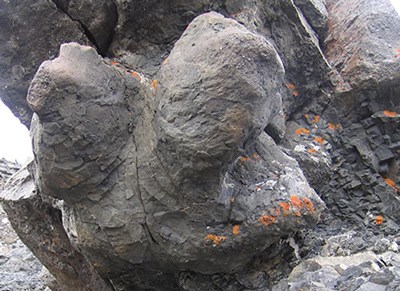
NPS Photo / Lian Law 
Identification Level: Genus
Although impossible to know for sure without finding body fossils, Edmontosaurus is a very likely candidate for the hadrosaur footprints in Denali. Edmontosaurus had a large range across western North America during the Late Cretaceous Period and is known from similar-age rocks on Alaska’s North Slope.

NPS Photo Tough plants would have been ideal for Edmontosaurus to eat. Rows of teeth and a flat muzzle shape allowed them to strip leaves from branches and grind them up prior to swallowing. This important adaptation contributed to their great success as a species, making them one of the most common and widespread dinosaurs of the Cretaceous. How do we know I lived in Denali? Denali hosted large herds of hadrosaurs as evidenced by the thousands of tracks found in the park. Hadrosaur footprints can be identified by three broad toes and can range in diameter from softball-sized for the young to small hula-hoop-sized for larger adults. 
In Denali, one rock outcrop is so completely covered with hadrosaur tracks that it has been nicknamed the ‘Cretaceous dance floor’. Some individuals even left behind skin impressions! |
Last updated: July 8, 2019
